Cichlids make great pets and are very easy to care for, but one important aspect of their care is feeding them the right food. There are many types of cichlid food on the market, and it can be difficult to know which is best for your fish. To make matters more complex, different cichlids have different dietary requirements.
In this article, we’ll take a look at the best cichlid food for growth, health, and color. We’ll also provide tips on selecting the right food for your cichlid’s specific dietary needs.
Comparison Table of the 5 Best Cichlid Food
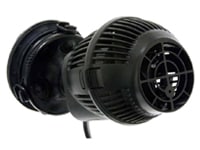
BRAND
TetraCichlid Cichlid Crisps Advanced Clear Water Formula
DETAILS
- Brand: Tetra
- Flavor: Fish
- Age Range: All Life Stages
- Target Species: Cichids
- Item Form: Flake
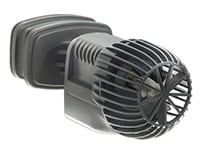
Aqueon Cichlid Pellets
- Brand: Aqueon
- Flavor: Seafood
- Age Range: All Life Stages
- Target Species: Fish
- Item Form: Granule
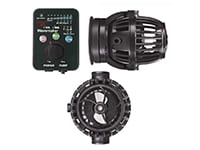
Omega One Super Color Sinking Cichlid Pellets
- Brand: Omega One
- Flavor: Seafood
- Age Range: All Life Stages
- Target Species: Fish
- Item Form: Pellet
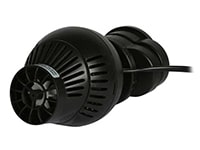
Xtreme Aquatic Foods Cichlid Peewee
- Brand: Xtreme Aquatic Foods
- Flavor: Other
- Age Range: Adult Fish
- Target Species: Fish
- Item Form: Pellet
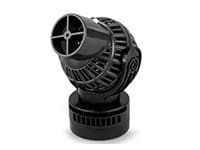
Fluval Bug Bites Cichlid Fish Food
- Brand: Fluval
- Flavor: Insect larvae, Salmon
- Age Range: Cichlids
- Target Species: Fish
- Item Form: Other
Cichlids: Origins and Diet
Cichlids are a large group of fish that are native to fresh and saltwater environments all over the world. They are a very diverse group of fish, and as a result, they have a wide range of dietary needs.
Most cichlids are omnivorous, which means they eat plant and animal matter. Their diet consists of small invertebrates, algae, and other plants in the wild. In captivity, they should be fed a diet that includes plant and animal matter to ensure proper nutrition.
There are a few exceptions to this rule, however. Some cichlids are strictly herbivorous, and others are strictly carnivorous. These fish should be fed diets that reflect their specific dietary needs.
Types of Cichlid Food
There are many types of cichlid food on the market, and it can be difficult to know which is best for your fish. The following is a list of the most common types of cichlid food, as well as their pros and cons:
Pellets
Pellets and flakes are a convenient and easy-to-use type of cichlid food. They are typically made from a mix of plant and animal matter, which makes them a good way to feed your cichlids a balanced meal without dealing with the hassle of sourcing and storing live foods. All you need to do is add water, and the food will expand and soften.
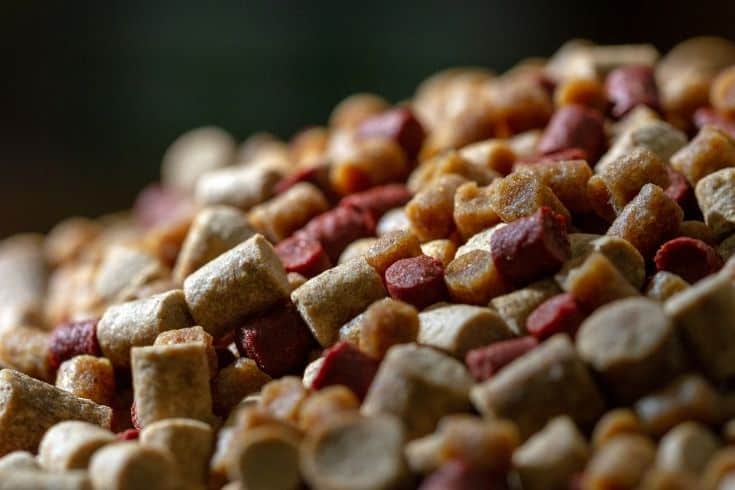
Pellets and flakes are also a good option because they come in specific formulations that will meet your cichlid’s dietary needs and feeding style. For instance, meat-based slow-sinking pellets are great for bottom-dwelling cichlids that prefer to feed on the substrate, while floating pellets are ideal for surface-feeding fish.
Despite their convenience, some pellets and flakes contain fillers and artificial ingredients that can harm your fish. It is not uncommon to find pellets and flakes that contain high levels of copper, which is toxic to cichlids. Always read the ingredient label carefully to make sure that the food you’re buying is safe for your fish.
Another great way of choosing good-quality pellets is by checking out online cichlid forums and reading reviews from other hobbyists. This will give you an idea of which brands are reputable and which ones to avoid. A little bit of due diligence goes a long way, especially when it comes to your fish’s health.
Live Foods
Live foods, such as brine shrimp, daphnia, and bloodworms, are a great way to add variety to your cichlid’s diet. They are also a good source of protein, which is essential for cichlid growth and health.
One of the main benefits of live foods is that they allow your cichlids to hunt and exercise their natural predatory instincts. This can help to reduce aggression and boredom in your fish. You may find it hard to believe, but watching your cichlids chase and eat live foods can be quite entertaining!
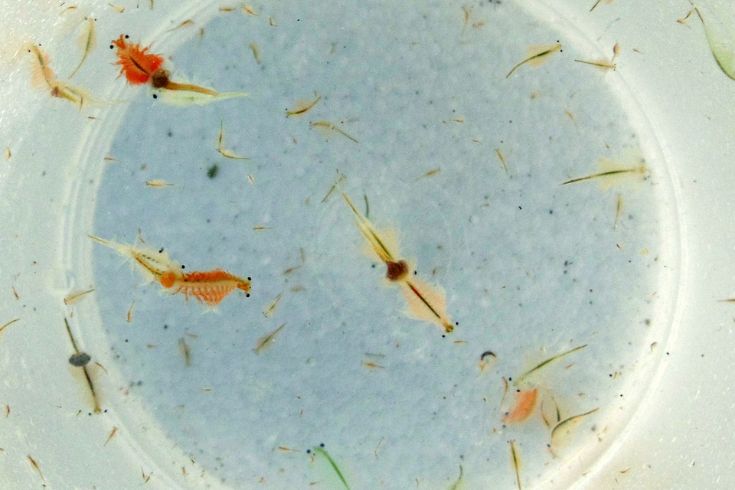
The only downside to live foods is that they can be difficult to source and store. They also have a short shelf life, so you must make sure you use them within a few days of purchase. Another potential risk of feeding live foods is that they can introduce parasites and diseases into your aquarium. This is why it’s important to only buy live foods from a reputable dealer.
Another potential workaround is to raise your live foods, such as brine shrimp or daphnia. This is a great way to ensure a steady supply of fresh and healthy live foods for your cichlids. However, the extra time and effort required of you may not be worth it, depending on your lifestyle.
Frozen Food
Frozen foods allow fishkeepers to preserve live foods’ nutrition and protein content without the hassle of dealing with live animals. These foods are typically flash-frozen at the peak of freshness, which locks in all the nutrients. Of course, the specific nutrient content will depend on the type of frozen food you’re feeding your fish.
Frozen foods are a great way to add variety to your cichlid’s diet and can be stored for long periods. This makes them a convenient option for busy hobbyists who don’t have the time to deal with live animals.
The only downside to frozen foods is that they can be expensive, and some brands contain fillers and artificial ingredients. As with pellets and flakes, it is important to read the ingredient label carefully before feeding your cichlids any frozen food.
Freeze-Dried Food
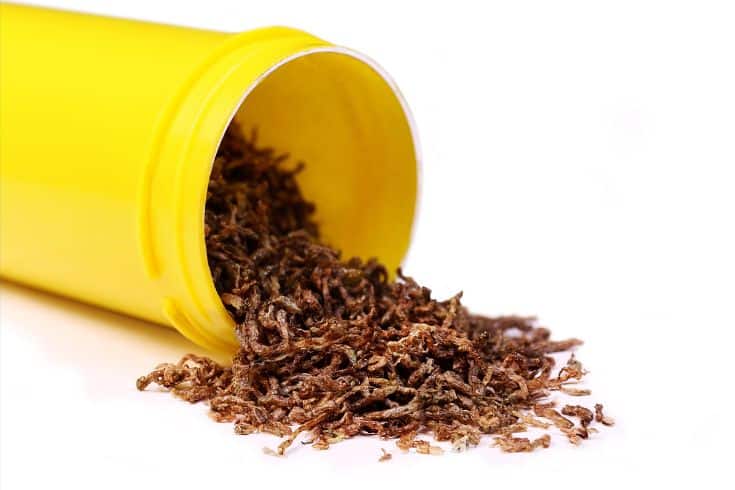
Like frozen foods, freeze-dried foods allow you to preserve the nutrition of live foods without the hassle of dealing with live animals. The main advantage of freeze-dried food over frozen food is that it is easier to store and transport. They are lighter and tinier because moisture has been removed from the food.
In addition to being easy to store, freeze-dried foods are also great for cichlids that are finicky eaters. The smell, taste, and texture of freeze-dried foods are more intense than those of pellets and flakes. This can entice even the most reluctant cichlids to eat, so it is a great way of getting picky eaters to consume a nutritious diet.
Freeze-dried food isn’t as expensive as one would think, and it is a great way to add live protein sources to your cichlid’s diet without breaking the bank. Just be sure to check the labels for fillers and artificial ingredients, as some brands tend to include these. You also want to make sure you’re sourcing your freeze-dried foods from a reputable dealer.
Vegetables
Cichlids are not obligate carnivores, which means they can digest and derive nutrients from plant matter. In the wild, most cichlids consume at least some plant matter as part of their diet.
While pellets and flakes usually contain some plant matter, you may want to consider supplementing your cichlid’s diet with fresh or frozen vegetables. Dark leafy greens like spinach and kale are a great option. You can also feed your cichlids peas, carrots, zucchini, and other veggies.
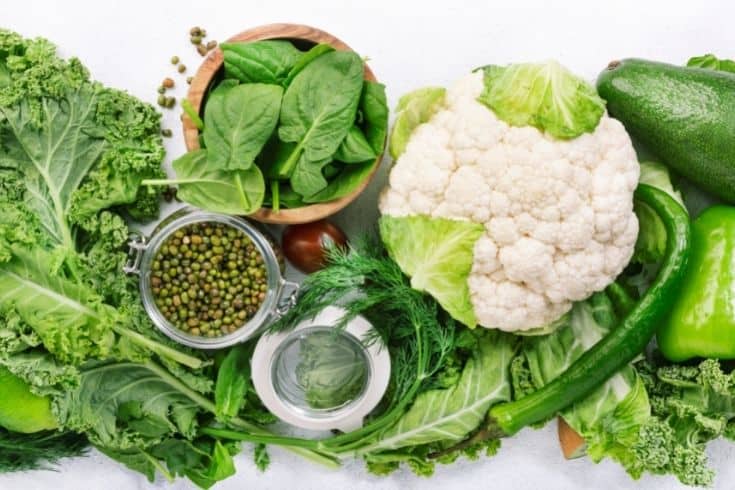
Vegetables are a great source of vitamins, minerals, and fiber. They can also help to maintain a healthy digestive system. Just be sure to chop or puree the vegetables into small pieces, as cichlids have trouble digesting them in their whole form.
You should also avoid feeding your cichlids vegetables with high levels of oxalates or nitrates. These substances can bind to calcium and other minerals, making them unavailable to your cichlid. This can lead to health problems down the road.
Supplements
Last, you may want to consider supplementing your cichlid diet with vitamins and minerals. Though not strictly necessary, supplements can help ensure your cichlid gets all the nutrients it needs to thrive. Replicating the natural diet of cichlids can be difficult, so supplements can help to fill in the gaps.
There are a variety of supplements on the market, but most of them act as natural color enhancers. These supplements contain carotenoids, which are responsible for the brilliant colors found in many cichlids. You can find these supplements in liquid, pellet, and powder form.
In addition to color enhancers, some supplements contain essential vitamins and minerals. These can help ensure your cichlid gets all the nutrients it needs, even if its diet is not perfectly balanced.
When using supplements, it is important to follow the directions on the label. Overdosing on vitamins and minerals can be just as detrimental to your cichlid’s health as not providing enough.
Choosing the Right Cichlid Food For Your Pet
Have we convinced you to switch your cichlid’s diet yet? If so, then it’s time to start thinking about how to go about choosing the right food for your pet.
There are a few things you’ll need to take into account when making your decision. Here are some of the key ones:
Make Sure It’s Formulated Specifically For Cichlids
It’s easy to assume that any generic fish food will do, but that’s not the case. The vibrant colors and active personalities of cichlids require a diet that is higher in protein and fat than what other tropical fish need. Though most pellets and flakes are usually adequate, you may want to consider a specifically designed food for cichlids.
These cichlid food pellets and flakes contain all the nutrients your cichlid needs to stay healthy and vibrant. Many of them also contain natural color-enhancing ingredients such as carotenoids, which will allow your cichlid’s bright colors to shine. In addition, many cichlid foods tend to be larger and more robust than generic fish foods, making them easier for cichlids to eat.
At the end of the day, opting for a cichlid-specific food is a matter of personal preference. If you feel like your cichlid is doing well on its current diet, then there’s no need to switch things up. However, if you’ve noticed uneaten food or you’re looking for a way to enhance your cichlid’s colors, then a cichlid-specific food may be the way to go.
Percentage of Crude Ingredients
We’ve established that a varied diet is important for cichlids, but what exactly should that diet consist of? When looking at pellet food labels, you’ll want to pay attention to the percentage of crude ingredients. This measures the amount of protein, fat, fiber, and moisture in food.
In most cases, you’ll want to choose a meat-based food with a high percentage of crude protein and fat. Look for recognizable ingredients such as fish meal, shrimp meal, and krill meal. Balanced nutrition is important, but protein and fat are the most essential nutrients for cichlids. Therefore, you should make sure that these nutrients make up a large part of your cichlid’s diet.
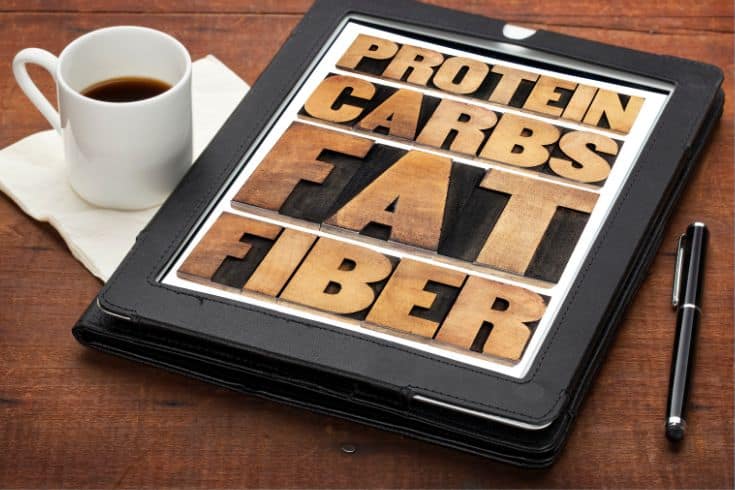
Crude ingredient percentage can also affect the water quality in your aquarium. For instance, food with lots of fillers usually clouds water more than food with fewer fillers. If you’re looking to keep your aquarium water quality high, then you’ll want to choose something with a higher crude ingredient percentage, so that most of what your cichlid is eating is digestible.
Life Stage
Once we have the basics such as high-quality ingredients down, it’s time to start thinking about the life stage. In general, you’ll want to choose a food appropriate for your pet’s stage of life. Cichlid growth rates can vary quite a bit, depending on the species. The different growth rates of cichlids mean that not all cichlids have the same nutritional needs.
Baby cichlids, or fry, have very different nutritional needs than adult cichlids. They need more protein and fat to support their rapid growth. On the other hand, adults need a balanced diet supplemented by fresh food to maintain their health. These varying needs mean choosing a food based on your cichlid’s life stage is important.
When in doubt, you should always consult your veterinarian or a cichlid expert to get specific advice on which food is best for your pet. The key to raising healthy fish is to provide them with the nutrients they need at every stage of their lives, so do your part and choose a food that meets your cichlid’s specific needs.
Cichlid Species
As we’ve previously touched upon, the cichlid family is quite large, and each species has its own unique nutritional needs. When choosing food, you’ll want to keep your cichlid’s species and physical attributes in mind. Larger cichlids will need a different diet than smaller cichlids, and herbivorous cichlids will need a different diet than carnivorous fish.

Of the vast variety of foods available on the market, there are some that are specifically designed for certain species of cichlids. If you can find a type of food tailored to carnivorous cichlids, you’ll know that it contains the right blend of nutrients for your fish.
The source of food is also important to consider when it comes to cichlid species. In the wild, some cichlids only eat live food, such as worms, crustaceans, and insects. If your cichlid is a larger fish or a predator, then you may want to consider supplementing their diet with live food. This will help them get the nutrients they need and provide them with the mental stimulation they crave.
Quality of Ingredients
Last but not least, the quality of ingredients in cichlid food is important to consider. You’ll want to ensure that all the essential vitamins cichlids need for a healthy life are accounted for in their diet. For example, vitamins C and E are important for cichlid health, but they are often lacking in commercial foods.
Additionally, you’ll want to check that the food you choose does not contain substances such as artificial colors or preservatives. These ingredients can be harmful to cichlids and are best avoided.
Finally, you must remember that not all raw ingredients are created equal. For instance, algae meal is a common ingredient in cichlid food, but there is a big difference between high-quality and low-quality algae meal. The same goes for something like a beef heart – some brands use high-quality beef hearts, while others use lower quality ingredients that may not be as nutritious.
When choosing the best cichlid food, quality is just as important as quantity. Be sure to check the ingredients list on any food you’re considering to ensure that it meets your cichlid’s specific needs.
Best Cichlid Food For Growth, Health And Color
Now that we’ve gone over some of the things to consider when choosing cichlid food, let’s take a look at some of the best foods on the market.
1. TetraCichlid Cichlid Crisps Advanced Clear Water Formula

- Brand: Tetra
- Flavor: Fish
- Age Range: All Life Stages
- Target Species: Cichids
- Item Form: Flake
Cichlids are known for being messy fish, but thankfully, the Tetra Cichlid Crisps help to keep the water clean and clear. The formula is designed to promote growth, health and color in your fish and also helps reduce waste. The flake food is easy for your fish to digest and contains all the nutrients they need to thrive.
The high protein formulation helps to promote growth, while the added vitamins and minerals support immune system health. The formula also contains carotenoids to help bring out the natural colors of your fish. Tetra Cichlid Crisps are a great choice for any cichlid keeper looking for high-quality food to keep their fish healthy and vibrant.
As a testament to its quality, the food has received rave reviews from users, with many saying that their fish love it and that it has made a noticeable difference in their cichlid’s health. Though some people think it’s a little pricier than other foods on the market, most agree that it’s worth the extra cost for its health benefits.
PROS
- Promotes growth, health and color in cichlids
- Reduces waste
- Easy to digest
- Contains all the nutrients cichlids need
CONS
- Some users find it a bit pricey
2. Aqueon Cichlid Pellets

- Brand: Aqueon
- Flavor: Seafood
- Age Range: All Life Stages
- Target Species: Fish
- Item Form: Granule
Aqueon is renowned for making high-quality fish food, and their cichlid pellets are no exception. The pellets are designed to provide all of the nutrients cichlids need for growth, health, and color. The seafood-enhanced pellets don’t just provide nutrition, but they also help to bring out the natural colors of your cichlid’s skin.
Like every good cichlid food, this particular formula is designed to reduce waste and keep your water clean. The pellets are easy for cichlids to digest and won’t cloud your water. South American and West African cichlids love this food, and many owners say it has made a noticeable difference in their fish’s health.
For the most part, this is a food brand that delivers on its promises. Some users have complaints that the pellets do not sink, making it difficult to feed bottom-dwelling cichlids. The packaging does little to alleviate some of this ambiguity, as it is not immediately clear if the food is meant for top or bottom feeders. Overall, this is a quality food that will keep your cichlids healthy and vibrant.
PROS
- Helps bring out natural colors
- Reduces waste and keeps water clean
- Easy to digest
- Specially formulated for cichlids
CONS
- Some users find that the pellets do not sink, making it difficult to feed bottom-dwelling cichlids
3. Omega One Super Color Sinking Cichlid Pellets

- Brand: Omega One
- Flavor: Seafood
- Age Range: All Life Stages
- Target Species: Fish
- Item Form: Pellet
There is always some debate over whether pellets or flakes are the better choice for cichlid food, but there is no doubt that Omega One’s pellets are top-of-the-line. These sinking pellets are made with quality ingredients such as kelp, crustaceans, and spirulina, providing an omnivorous fare that is sure to please even the pickiest eaters.
To add to their list of accolades, these pellets are rich in omega-3 fatty acids, which support heart health, and they also contain carotenoids to bring out the natural colors of your cichlid’s skin. Omega One has gone the extra mile by avoiding hydrolysates, commonly used in fish food but can damage cichlids’ delicate digestive systems.
As an Amazon’s Choice product, these pellets have earned their spot among the best cichlid foods on the market. Users love that the pellets are easy to digest and that they don’t cloud the water. The only downside is that some cichlids seem to prefer larger pellet sizes, which means that these 2mm pellets may be too small for some fish.
PROS
- Sinking pellets are easy to digest
- Made with quality ingredients
- Rich in omega-3 fatty acids
- Contains carotenoids to bring out natural colors
CONS
- Some cichlids may prefer larger pellet sizes
4. Xtreme Aquatic Foods Cichlid Peewee

- Brand: Xtreme Aquatic Foods
- Flavor: Other
- Age Range: Adult Fish
- Target Species: Fish
- Item Form: Pellet
Supporting small businesses allows you to vote with your wallet, and Xtreme Aquatic Foods is a company that deserves your support. These floating pellets are made in the USA with quality ingredients such as krill, shrimp, and pea protein. The pellets are also enriched with vitamins and minerals to support your cichlid’s health.
One of the things that sets this food apart is the fact that it is professionally formulated for cichlids. This means that the pellets are a perfect size for cichlids to eat and digest easily. This means that your cichlids will get the most out of their food, and you won’t have to worry about messy water conditions. This food is also great for picky eaters, as the pellets are highly palatable.
The only downside to this food is that it tends to sink a little too quickly. This may not be an issue if you use a sand substrate because the pellets will just sink to the bottom, but if you have a gravel substrate, the pellets may get stuck and go to waste. The good thing about cichlids is that they are opportunistic eaters, so they will probably still find the pellets even if they sink too fast.
PROS
- Made in the USA with quality ingredients
- Enriched with vitamins and minerals
- Perfect pellet size for cichlids to eat and digest easily
- Highly palatable
CONS
- Pellets may sink too quickly for some substrates
5. Fluval Bug Bites Cichlid Fish Food

- Brand: Fluval
- Flavor: Insect larvae, Salmon
- Age Range: Cichlids
- Target Species: Fish
- Item Form: Other
Remember when we mentioned how important it is to supplement your cichlid’s diet with live foods? Fluval has created a food that does just that. These salmon pellets come with black soldier fly larvae, which are an excellent source of protein and essential fatty acids. The pellets also contain kelp, spirulina, and other plant-based ingredients to provide your cichlid with a well-rounded diet.
Fly larvae may not sound appetizing to you, but cichlids love them. The good thing about these pellets is that the larvae are freeze-dried, which means they retain all their nutrients. This food is also great for finicky eaters, as the pellets have a strong smell and taste that cichlids can’t resist. Cichlids may already be used to eating live foods, but if not, this food is a great way to get them started.
The only downside to this food is that it is a little on the pricey side. However, you get what you pay for, and this food is definitely worth the price. If you want to give your cichlid the best possible diet, then this is the food for you. You can rest knowing that your beloved pets get the nutrition they need to thrive.
PROS
- Contains freeze-dried fly larvae for a natural source of protein
- Enriched with kelp, spirulina, and other plant-based ingredients
- Strong smell and taste that cichlids can’t resist
CONS
- A bit pricey compared to other cichlid foods
The Takeaway
If you want to give your cichlid the best possible diet, then you should consider investing in one of the best cichlid foods on the market. With so many great options to choose from, you’re sure to find the perfect food for your beloved pet. So, what are you waiting for? Start shopping for the best cichlid food today! Your cichlid will thank you for it.
We hope you enjoyed reading this article. If you did, please share it with your cichlid-loving friends and family. Thanks for reading!
